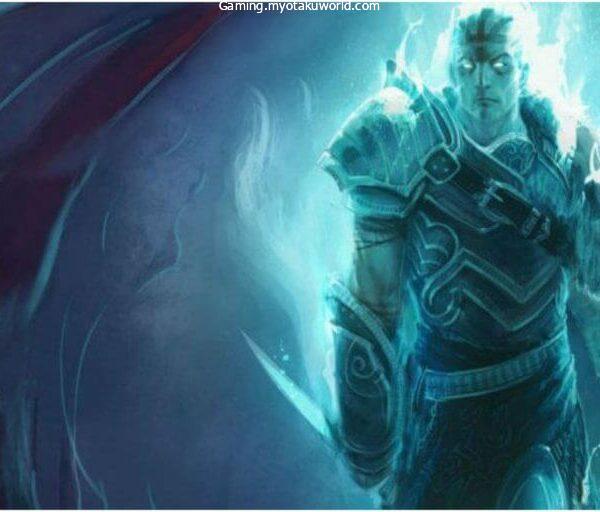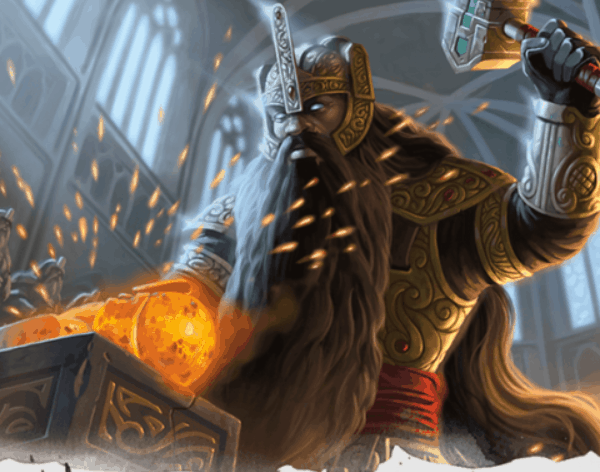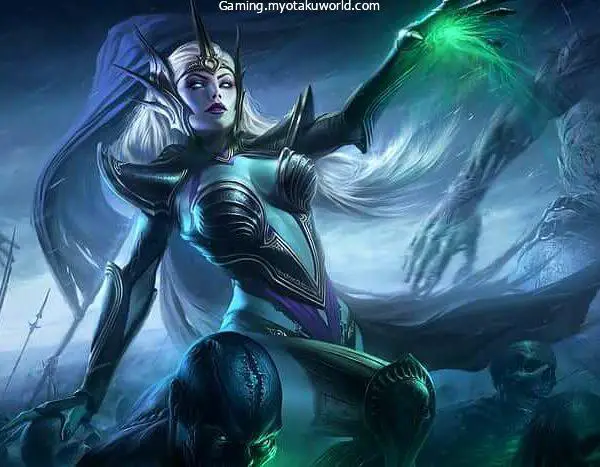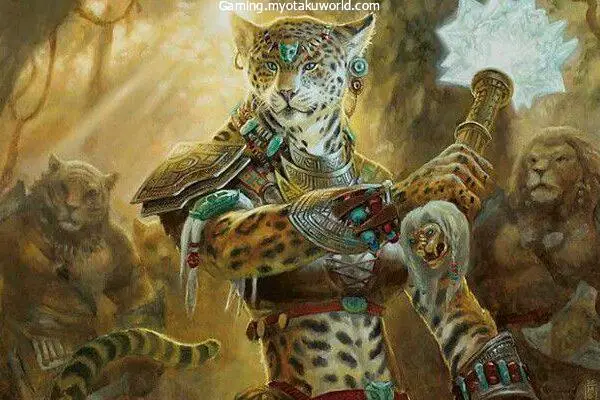A group of characters who are going on an Tanking adventure works together to get through the campaign.
Most of the time, players try to take on different roles to help the party in a certain way.
This is to prevent overlap from making one player feel less important.
Here, we’ll talk about what the tank does.
- What is a Tank in D&D 5e?
- How to Play a Tank in D&D 5e?
- Tank Races
- Core Races
- Expanded Races
- Tank Classes
- Fighter
- Fighter Subclasses For Tanking
- Paladin
- Paladin Subclasses For Tanking
- Barbarian
- Barbarian Subclasses For Tanking
- Tank Feats
- Health Feats
- Opportunity Attack Feats
- Spells For Tanking
- Paladin Spells
- Alternative Build Spells
- Get Enemies to Attack You
- Final Advice
What is a Tank in D&D 5e?
In D&D 5e, the tank is a combat role.
Their main job is to keep dangerous creatures away from attacking the party members who are weaker physically.
Tanks are basically like human-shaped shields that stand between the enemy and the allies.
If you’ve played any MMOs or know anything about how dungeons work, you’ve probably heard of tanking.
People with armour who draw attention away from the group’s damage dealers and healers.
In D&D, it works in a similar way.
The main difference is that D&D doesn’t have many rules about how to directly get an enemy’s attention.
Most of the time, that requires a class feature or a spell.
Now, I’ll say that in Dungeons & Dragons, there is no official definition for a tank or any other role.
Most of these words come from MMOs or other games.
And in D&D 5e, you don’t even need a tank to have fun and do well.
But there are ways to play a tank in the game if that’s what you want to do.
The tank is the most important part of your group’s defence.
As a tank, your job is to keep the enemies’ attention off of your group and on yourself.
This means you have to think about where you are in relation to your party members, the enemies coming at you, and any defensive skills you may have.
Most roles in Dungeons and Dragons 5th Edition (D&D 5e) are helpful but not required.
In 5e, you don’t really need a tank.
But with the tips in this tanking character build guide, you can make a tank that could save your team’s lives more times than they could count.
How to Play a Tank in D&D 5e?
So, now that you know what a tank is, let’s look at how to play a tank in D&D.
When making a tank, there are a lot of things to keep in mind.
You should know what your role is in the group, from your hit points and armour class to know how you should fight.
When you play a tank, the most important things to remember are:
- Usually, you need a good Armor Class.
- You should have plenty of hit points.
- Don’t forget about your Dexterity Ability Score.
- Use your position in battle to get people to attack you.
- Learn the basics of tanking.
In D&D, all of these things help you make and play a good tank character.
Should you keep all of these things in mind with every tank character you play?
Not even close.
Play the role you want to play at the end of the day.
And not every tank needs to follow these general rules or is even able to.
You should now know that there are more than one way to play a tank in D&D5e.
Tank Races
Most players’ first big decision is which race to play.
The race is your character’s species.
It affects some of their scores and gives them 3-5 skills.
Core Races
Many Dungeon Masters (or DMs) only let players choose from the basic races, so we’ll start with the three that can help you build a defence.
First, the Hill Dwarf gives you an extra point of health and two points of constitution per level.
Second, the Half-Orc gives you one point of Constitution and one point of Reckless Endurance.
This lets you take one more hit before you die.
If your DM lets you play as a Variant Human, you might want to try one of the six feats we’ll talk about later for a certain build.
Other than that, Half-Orc helps more at lower levels.
On the other hand, Hill Dwarf is better at defence at higher levels.
Expanded Races
If your DM lets you play as a different race, you have four more important choices.
The Goliath’s ability to reduce damage is similar to that of the Half-Orc, but it is weaker and easier to use.
The Loxodon and Tortle give you different ways to figure out your armour, so you can try out different options.
Most of these options are in the defensive spells section.
Lastly, the Warforged gives a person an extra point of armour and resistance on top of what they already have.
Or protection from a number of magic effects.
Tank Classes
The most important choice a player makes is their class.
They are the wide range of skills and tools that a character has access to.
You also choose a subclass for your character between level one and level three.
This changes how your character acts from the standard class.
Let’s take a look at some good tank classes.
Fighter
We’ll start with the Fighter.
Most people think that the fighter is the easiest class to learn.
But that doesn’t mean it gives up being good for being easy.
As one of the two classes that can start with heavy armour, it’s easy to get a high armour class, or AC, to reduce the number of hits that land.
At level one, you get a fighting style that makes you better at one part of fighting.
There are two good ways to build a tank.
If you are fighting with other melee characters, Protection can help keep them from getting hit.
The Defense style gives you an extra point of AC, which isn’t as strong but can be useful in more situations.
At the same time, you get a skill called “Second Wind,” which lets you get back some of the health you lost while on the front lines of your party.
As you move through the middle levels of the game, you also get more and more Indomitable, which lets you recover from spells and other saves.
Fighter Subclasses For Tanking
There are a few different ways that subclasses can help.
The Banneret lets allies use both Second Wind and Indomitable.
Battle Master is more complicated, but you can choose manoeuvres to stop enemies from attacking and make allies less likely to attack.
Champion, the simplest of the subclasses, gives you an extra way to fight. And gives automatic healing in an emergency at the peak.
At the third, tenth, and fifteenth levels, the Samurai gives a small amount of temporary health that can be used as a shield.
Paladin
Let’s look at the Paladin next.
You get heavy armour like the fighter, which helps you start with a high AC.
At level two, you also get a fighting style, just like the fighter.
There are two good ways to build a tank here.
You can choose either general Defense or situational Protection for a Paladin tank build.
Aura of Protection lets you make your allies more resistant to spells at level six.
At level eighteen, it grows to cover a bigger area.
Paladin Subclasses For Tanking

Some of the subclasses of the Paladin also make them better tanks.
At level 7, Oath of the Ancients gives you spell damage resistance and two high-level abilities that can heal you and keep you from falling unconscious, so you can stay standing as a humanoid shield.
The third and seventh abilities of the Oath of Conquest can be used together to make a barrier that stops enemies from running past you and may hold them in place so they take a small amount of psychic damage.
While the capstone ability can be used to stop big hits for a short time, it can’t stop them from hurting you.
The best tank in an MMO is Oath of the Crown.
The third-level ability lets you keep enemies close to you so that your ranged members can shoot them from far away.
At level 7, you can take damage for nearby allies.
And the final ability lets you take half as much physical damage (BPS) and makes it almost impossible for enemies who are unconscious to die for an hour.
Now, the Oath of Redemption is similar, but a bit more reactive.
Instead of controlling how enemies move, it focuses on punishing them when they do damage instead.
Barbarian
Our last big tank is the Barbarian.
They don’t start with any armour like the Fighter and the Paladin do.
Instead, their armour class is a combination of how strong they are and how tough they are.
If these two modifiers are high enough, the Barbarian’s AC can be the same as or even better than the other two.
Even more so with the help of a shield.
Even if your AC is lower, the extra health you start with as a barbarian should make up for it.
Your other starting ability, Rage, can reduce the damage you take for a short time.
At level 2, Danger Sense gives you a better chance of making dexterity-saving throws, which are the ones most likely to hurt you.
At the eleventh level, Relentless Rage can keep you from passing out from a final hit.
At the top of your class, your constitution and strength go up by four, which raises your AC by two and raises your maximum health by a lot.
Barbarian Subclasses For Tanking
You can also become a tank by using three of the subclasses of the Barbarian.
First, at level three, the Ancestral Guardian lets you mark an enemy with an attack.
If an enemy is marked, it will be hard for it to hit allies and it will do less damage.
At level six, you can reduce the damage Rage does to allies, and the subclass capstone lets you do damage to attackers while using the level six ability.
The Bear and Wolf choices in the Totem Warrior subclass can give you some limited defensive abilities.
The Zealot can also help you and your allies make saves.
Plus, the subclass capstone can keep you awake even when you should be sleeping.
Tank Feats
You can make up for any flaws in your build by picking a good feat or group of feats.
At levels 4, 8, 12, and 16, you can add two points to your ability scores with any class.
Most DMs will instead let you choose from a list of feats that can make you much better at a small part of the game.
As a tank, you can use six solid feats to build up your defensive wall.
Health Feats
Let’s start with the two that are good for your health.
These keep things easy and let you stay up later.
With the Durable feat, you can add one to your Constitution and increase how much health you get back when you rest for a short time.
And the Tough feat just gives you two more health per level.
Consider Durable if you have an odd constitution score or if you plan to take a lot of short rests.
If you don’t do that, Tough is more likely to give you big benefits.
Opportunity Attack Feats
The next three are mostly about improving your chance attacks.
Opportunity attacks are extra attacks that anyone can make when an enemy moves out of melee range without taking the action to disengage.
Polearm Master is the one that can be used most often.
When an enemy comes into range and you have the right weapon, you can make an opportunity attack.
This is good for dealing damage, but it’s hard to use as a defence unless you can position yourself so that an enemy starts out of your range and can’t reach other members of your party by the time they leave your range.
Blade Mastery is an easier defence skill to use.
This gives an advantage on attacks of chance.
And if you’ve avoided needing the opportunity attack, you can use your reaction to raise your AC by one, which is helpful if you’re the tank and will be taking hits.
Lastly, Sentinel makes the most of “opportunity attacks” when he has the chance to do so.
Even if the enemy gets out of the fight, you can still use your opportunity attack.
Even better, if an opportunity attack hits, the target can no longer move any further.
You and your back line can keep moving just a little bit each turn to lock the target in place, making it impossible for your weaker friends to catch you.
Our last choice is an odd quirk. But it’s worth a look.
If you already know how to use your skills well, the Martial Adept can give you a few more tools to use.
Using moves like Maneuvering Attack, Parry, or Pushing Attack can help you take care of your enemies.
Spells For Tanking
Spells are magical abilities that can only be used a certain number of times per day.
Note that this part is less important if you are making a Barbarian or Fighter build, since they can’t use spells or can only use a few.
Paladin Spells
Most tanks won’t need spells unless they choose one of our Paladin builds.
So, we’ll start with Paladin spells and then talk about spells that can help players using the Loxodon or Turtle builds.
Paladins who like to be defensive can use three spells at the first level.
If your party expects to face spellcasters, Bless gives an extra boost to saving throws.
Safety from both bad and good Reduces by a large amount the chance that certain types of creatures that are more common at higher levels will hit one creature.
It can change the game if you have one melee character on your side against one of the affected creatures, but you shouldn’t use it if you don’t expect to see those creature types.
Shield of Faith is another one-target spell that boosts AC by two for a short time.
This can fix the fight if your melee partner didn’t make their character with defence in mind or if someone is in danger out of the blue.
At the second level, you only have one way to defend.
A few party members can get a small amount of extra health from the Aid spell that day.
The increased maximum is most useful when you have a good healer in your party.
At level 3, there is only one good defence spell.
Protection from Evil and Good is like Protection from Evil and Good, but stronger.
It has a range, multiple effects, and stops all damage from close-range attacks while making long-range attacks harder.
You can use it on weaker party members to give them a lot of protection when fighting an affected type.
Even better, it can also be turned around and used as a cage to control or protect.
At level four, you have two good choices.
Aura of Purity gives a radius of resistance to most conditions.
This is especially helpful if you plan to fight spellcasters, who can get around many of the other defences you set up as a tank.
Death Ward works the same way as the Half-Reckless Orc’s Endurance.
It lets another player overextend themselves if they need to, or it lets a low-health caster survive a hit that is bigger than usual.
Now, at level 5, the paladin has two more defensive spells to choose from.
Circle of Power is another spell that protects a lot from spellcasters and is based on saving throws.
When you use Summon Celestial Spirit, you put another body on the field.
This makes it harder for the enemy to focus on you or the people you’re trying to protect.
At the level you can cast it, it has a low amount of health, but a defensive buffer that can attack on its own turn is not to be taken lightly.
Alternative Build Spells
The other spells come from lists of wisdom for those who wanted to go the Loxodon or Tortle route.
Just by being two people, the beastmaster ranger can make a good wall that enemies have to get through.
From the default list, the best combination of AC and health is a giant weasel.
But most DMs will let you pick an animal with the same or less difficulty.
If you can get it approved, the giant crab’s starting AC of 17 puts at least two well-armored characters between your wizard and incoming enemies.
If you also use Conjure Animals and Conjure Woodland Beings, you can bring even more allies onto the field, making a living wall that your DM can’t get through.
Spike Growth can hurt enemies who try to get closer to you while your team keeps attacking from a distance.
Wind Wall can stop smaller creatures and projectiles, but it also stops you and your allies from doing the same.
For Druids, the way they tank is similar to how animal health works.
If you choose the Circle of the Moon subclass, you can change into an animal form and do more damage and get a bigger health pool.
When you’re not in your animal form, you can do even more spells like Wall of Stone and Conjure Minor Elementals that the ranger could do.
Lastly, Clerics don’t have any direct tanking abilities like a Beastmaster or Moon Druid.
But they have a lot of the same spells as Paladins, Rangers, and Druids.
Protection From Good and Evil, Magic Circle, and the other defensive spells we thought about for Paladin.
When you summon celestials, they become allies and get a fair number of magic walls.
Since so many subclasses have heavy armour, they could easily go to the front and help if they needed to.
If everything else fails, they have the best chance of getting healed and getting over a failure.
Get Enemies to Attack You

Tanking is all about getting enemies to attack you instead of your allies.
This is the most important part.
In D&D 5e, this part is hard because there aren’t many ways to make enemies target your character.
Now comes the tough part.
Since D&D 5e doesn’t have an aggro system, you can’t really make an enemy attack you instead of one of your allies.
Yes, there are spells and other things that make people act this way.
But there aren’t many, if any, that force them to attack or cast a spell at you.
This shows how important positioning is.
If you make yourself the easiest target or stand between enemies and allies, you are more likely to get hit instead of your party members.
Even though it’s not perfect, it can work.
Having an AC that is easy to use also helps.
If your Armor Class is too high, smart enemies might ignore you and try to kill your spellcasters instead.
But if your AC is too low, you keep getting hit over and over again.
Now, you can use spells like “command” or “compelled duel” (if you’re a Paladin) to change how enemies act.
But to use them, you need to play a tank who can cast spells or take the Magic Initiate feat.
The best way to get enemies to attack you instead of your allies is to make yourself the easiest target.
Final Advice
The last thing you need to figure out is how your positioning works with the style of tank you’ve made.
Depending on what you made, you may be trying to stay close to the person next to you so you can help them.
Or, you could be trying to stay far away to keep enemies from getting too close to your party.
A barbarian, for example, can take a lot of damage and still deal a lot of damage.
But your party doesn’t get the benefits of your base class.
By intercepting the enemy from a distance using your increased speed, you don’t have to worry about your allies when you take damage.
Paladins have auras that help when they are close to other party members, so they should probably be closer to them.
Opportunity attack feats work best when you are a short distance ahead of the rest of your group, so an enemy can’t leave your range and reach an ally on the same turn.
If your DM tells you about a narrow hallway or some other place that could be used to choke you, go there and count yourself lucky.
Most of your party should be able to shoot from a distance, so that melee enemies can’t get to them.
When moving and planning around others in combat, you should always think about what skills you have ready.
We’ve thought about a few ways to make your character a serious threat to the defence.
You could be a Human fighter and use chance attacks and well-timed moves to control the field and make monsters do what you want.
You could also be a Half-Orc Barbarian who never loses.
Or a Paladin who protects your team until the very end.
You could even try a less direct magical tank that builds walls and sends a lot of minions onto the field.
But no matter what you build, may your party stay together.









